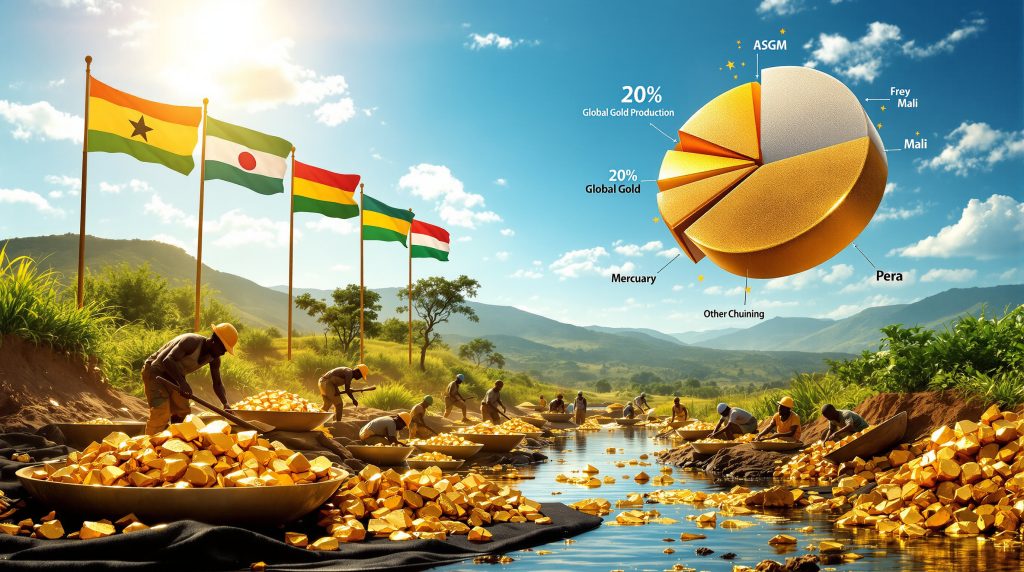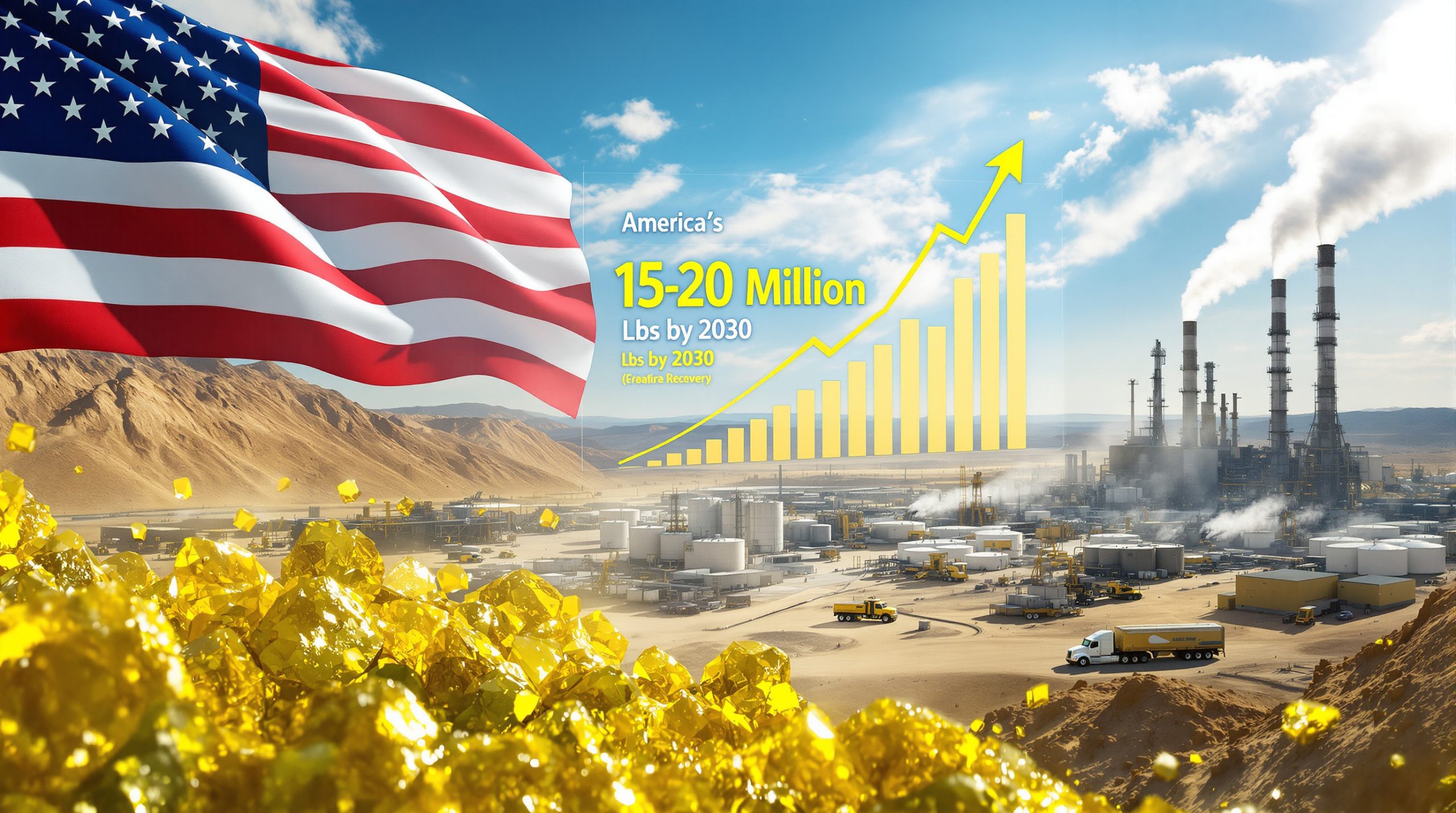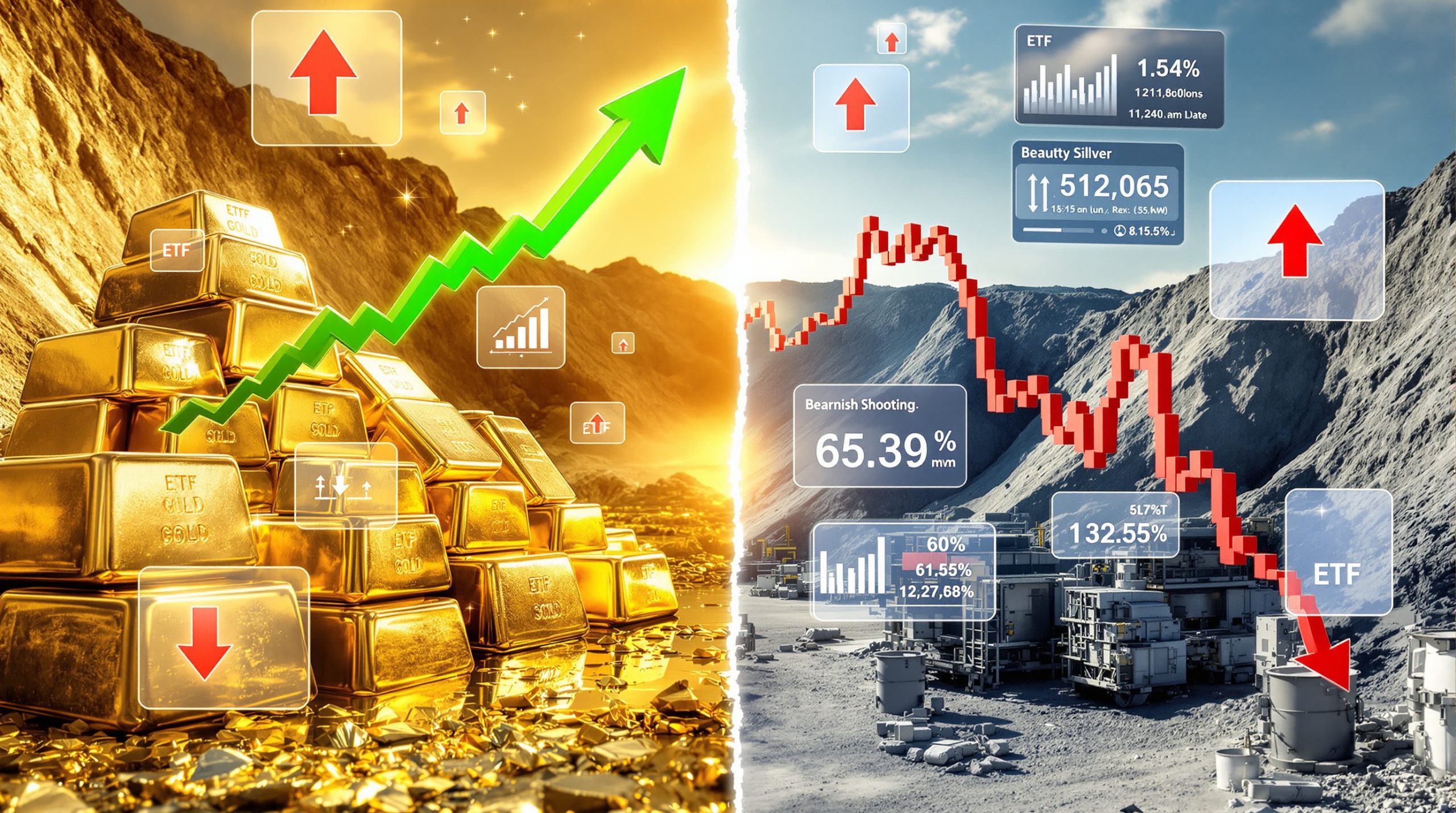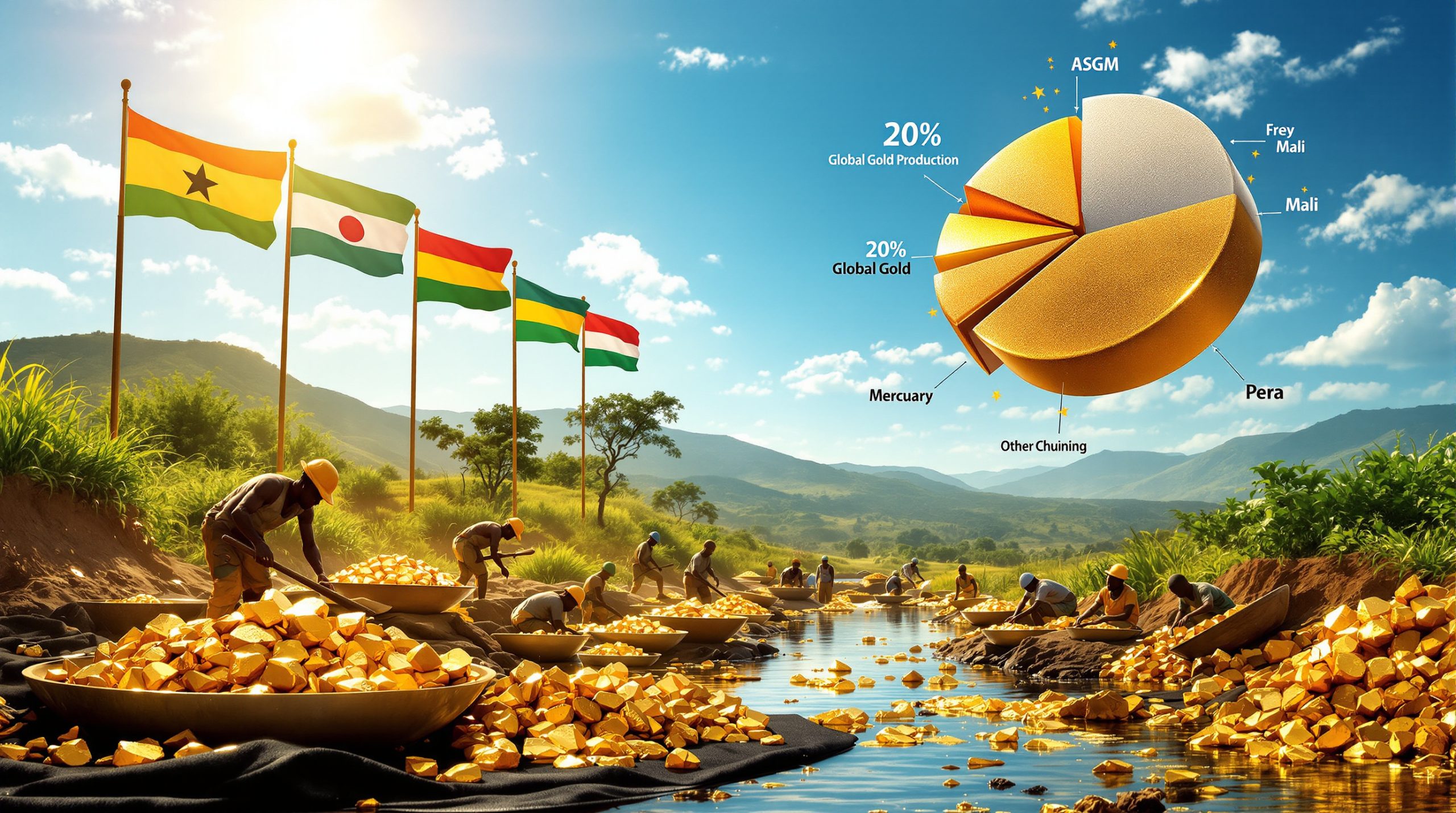Small-scale and artisanal gold mining (ASGM) represents one of the world's most significant yet underregulated mining sectors. This labour-intensive industry operates through minimal mechanisation and limited capital investment, relying primarily on basic extraction techniques passed down through generations. ASGM operations typically involve individual miners, family groups, or small community collectives using elementary tools such as pans, sluices, and hand-operated equipment to extract gold from surface deposits and shallow underground formations.
The sector's defining characteristics centre on its accessibility to rural communities with limited resources. Unlike industrial mining operations that require substantial infrastructure and sophisticated machinery, ASGM can commence with investments as modest as a few hundred dollars for basic equipment. This low barrier to entry makes gold mining an attractive livelihood option for communities facing agricultural challenges, seasonal unemployment, or limited economic alternatives.
Operational Framework and Technical Methods
ASGM operations employ time-tested techniques adapted to local geological conditions and available resources. Placer mining dominates the sector, where miners extract gold particles from river sediments, alluvial deposits, and weathered rock formations using gravitational separation methods. These techniques include panning, where heavy gold particles settle while lighter materials wash away, and sluicing, which channels water through constructed channels to separate gold from sediment.
Primary Extraction Methods:
• Placer mining: Surface extraction from river beds and alluvial deposits
• Shallow pit mining: Small-scale excavation of weathered gold-bearing rock
• Hard rock mining: Manual extraction from quartz veins and ore bodies
• River dredging: Underwater sediment processing using portable equipment
Distinguishing ASGM from Industrial Mining Operations
The contrast between artisanal and industrial gold mining extends far beyond scale differences. While industrial operations deploy advanced technology, comprehensive environmental management systems, and substantial capital investments, ASGM relies on human labour, traditional knowledge, and community-based organisational structures.
| Operational Aspect | ASGM Operations | Industrial Mining |
|---|---|---|
| Initial Investment | $1,000-$25,000 | $100 million-$2 billion |
| Technology Integration | Manual tools, basic processing | Automated systems, advanced metallurgy |
| Environmental Management | Community-based practices | Professional monitoring systems |
| Regulatory Framework | Often informal or limited | Comprehensive legal compliance |
| Employment Structure | Family and community-based | Professional workforce |
| Production Timeline | Continuous small-scale output | Project-based development cycles |
Global Production Significance and Economic Impact
ASGM contributes approximately 20% of global gold supply, representing a substantial portion of the world's annual gold production according to World Gold Council research. This contribution translates to an estimated 400-500 tonnes of gold annually, demonstrating the sector's critical role in international gold markets despite its decentralised nature.
The sector's economic significance extends beyond raw production figures. ASGM directly supports approximately 20 million occupations globally, making it one of the world's largest informal employment sectors. These direct employment figures represent only the immediate mining activities, with economic benefits extending to an estimated 80-100 million people through supply chain participation, local commerce, and community service provision.
Regional Production Distribution and Characteristics
ASGM operations concentrate in specific geographical regions where geological conditions, economic circumstances, and regulatory environments create favourable conditions for small-scale mining activities. Sub-Saharan Africa dominates global ASGM production, accounting for approximately 50% of worldwide output through operations spanning countries including Ghana, Mali, Burkina Faso, Tanzania, and Sudan.
Continental Production Breakdown:
• Africa: 50% of global ASGM output, employing 12+ million miners
• Asia-Pacific: 25% of global output, concentrated in Philippines, Indonesia, Mongolia
• Latin America: 20% of global output, primarily Amazon Basin operations
• Other regions: 5% of global output, including scattered operations worldwide
The seasonal nature of ASGM activities significantly influences production patterns. Many operations align with agricultural cycles, where communities engage in mining during dry seasons when farming activities decline. This seasonal pattern creates fluctuations in gold supply that can influence local and regional record gold prices, particularly in areas where ASGM represents a significant portion of economic activity.
Market Integration and Value Chain Participation
Despite contributing substantially to global gold supply, ASGM operations often remain disconnected from formal gold markets. Most artisanal miners sell their production through informal networks to local buyers, middlemen, or small-scale dealers who subsequently channel the gold into formal market systems. This disconnection results in miners receiving significantly below-market prices for their gold, often earning 60-80% of spot gold prices due to their limited market access and negotiating power.
Informal Operations and Regulatory Challenges
Approximately 85% of ASGM operates outside formal regulatory frameworks, creating a massive informal economy within the global gold sector. This informality stems from complex bureaucratic barriers, prohibitive licensing costs, and inadequate government support systems designed to accommodate small-scale mining operations.
The regulatory challenges facing ASGM formalisation reflect broader issues of governance, economic development, and resource management in developing countries. Many nations lack appropriate legal frameworks for small-scale mining, instead applying industrial mining regulations that prove impractical for artisanal operations.
Barriers to Legal Operation
Financial Obstacles: Licensing fees often exceed annual miner incomes, creating insurmountable financial barriers. Mining permits designed for industrial operations may cost $10,000-$50,000, while artisanal miners typically earn $1,000-$3,000 annually from their mining activities.
Administrative Complexity: Documentation requirements frequently include technical reports, environmental impact assessments, and legal surveys that small-scale miners cannot afford or access. These requirements assume technical capabilities and financial resources unavailable to most ASGM practitioners.
Geographic Isolation: Many ASGM operations occur in remote locations with limited government presence or administrative infrastructure. Miners may need to travel hundreds of kilometres to access licensing offices, creating additional costs and time constraints.
Market Access Limitations: Formal gold buyers often require documentation, quality certifications, and minimum quantities that informal miners cannot provide. This creates a circular problem where miners cannot access formal markets without licences, but cannot afford licences without access to better prices from formal markets.
Economic Drivers Supporting Informal Operations
The persistence of informal ASGM operations reflects rational economic decision-making within constrained circumstances. For many rural communities, artisanal mining provides essential income during agricultural off-seasons or when crop yields prove insufficient for household survival.
Economic Reality: Rural families often choose ASGM participation as a risk management strategy, diversifying income sources to reduce dependence on climate-vulnerable agriculture.
Immediate Cash Generation: Unlike agricultural activities requiring months between planting and harvest, gold mining provides immediate income opportunities. Miners can extract and sell gold within days or weeks, providing crucial cash flow for household expenses, medical emergencies, or educational costs.
Low Skill Requirements: ASGM techniques require minimal formal education or technical training, making the sector accessible to individuals with limited alternative employment opportunities. Traditional knowledge passed through communities often provides sufficient technical foundation for basic mining activities.
Environmental Consequences and Ecosystem Impacts
ASGM creates significant environmental challenges, with mercury contamination representing the most severe and widespread impact. The sector accounts for approximately 35-40% of global mercury emissions, making it the largest single source of mercury pollution worldwide according to United Nations Environment Programme assessments.
Mercury Contamination Crisis
Mercury usage in ASGM stems from its effectiveness in amalgamating fine gold particles that would otherwise be lost during processing. However, this practice releases mercury into air, water, and soil systems through various pathways, creating long-term contamination that affects entire ecosystems and human populations.
Mercury Release Mechanisms:
• Atmospheric emissions (55-65%): Released when miners burn mercury-gold amalgam to separate metals
• Water contamination (20-30%): Direct discharge of mercury-contaminated processing water
• Soil contamination (15-25%): Mercury accumulation in mining areas and processing sites
The environmental persistence of mercury creates cumulative contamination effects. Mercury can remain active in ecosystems for decades, bioaccumulating in food chains and affecting wildlife populations far from original mining sites. Aquatic systems prove particularly vulnerable, as mercury converts to highly toxic methylmercury in anaerobic sediments.
Habitat Disruption and Biodiversity Loss
ASGM operations create direct habitat destruction through excavation activities, forest clearance, and water diversion projects. While individual operations may disturb relatively small areas, the cumulative impact across thousands of sites creates substantial ecosystem disruption.
| Environmental Impact Type | Estimated Annual Scale | Recovery Timeline |
|---|---|---|
| Forest clearance | 30,000-50,000 hectares | 25-75 years |
| Water source degradation | 300+ river systems | 15-40 years |
| Soil profile disruption | 15,000-25,000 hectares | 20-50 years |
| Wetland modification | 5,000+ hectares | 30-100+ years |
Aquatic System Impacts: River mining and processing activities alter natural water flow patterns, increase sediment loads, and introduce chemical contaminants. These changes affect fish populations, water quality for downstream communities, and overall aquatic ecosystem health.
Terrestrial Ecosystem Effects: Surface mining removes topsoil and vegetation, eliminating habitat for plant and animal species. Recovery requires decades even when mining activities cease, as soil formation and forest regeneration proceed slowly in tropical environments where much ASGM occurs.
Health Consequences and Safety Risks
Small-scale and artisanal gold mining (ASGM) operations expose miners and surrounding communities to severe health risks, with mercury poisoning representing the most serious long-term threat. The World Health Organization identifies mercury exposure from artisanal gold mining as a critical public health issue affecting millions of people globally.
Mercury Exposure Pathways and Health Effects
Mercury exposure in ASGM communities occurs through multiple pathways, creating widespread health risks extending beyond direct mining participants. Inhalation of mercury vapours during gold processing, consumption of mercury-contaminated fish and water, and skin contact with mercury-containing materials all contribute to dangerous exposure levels.
Primary Health Impacts:
• Neurological disorders: Tremors, memory loss, cognitive impairment, and motor skill deterioration
• Developmental issues: Learning disabilities and developmental delays in children exposed in utero
• Kidney damage: Reduced kidney function and increased risk of kidney disease
• Cardiovascular effects: Increased risk of heart disease and hypertension
Vulnerable Populations: Pregnant women and young children face the highest risks from mercury exposure. Developing nervous systems prove particularly susceptible to mercury damage, with exposure during pregnancy potentially causing permanent cognitive and motor impairments in children.
Occupational Safety Hazards in Mining Operations
Beyond mercury risks, ASGM operations present numerous physical safety hazards due to inadequate safety equipment, limited training, and dangerous working conditions. The informal nature of most operations means safety regulations rarely apply or receive enforcement.
Safety Statistics: International Labour Organisation estimates suggest ASGM experiences accident rates 5-10 times higher than formal mining operations, with tunnel collapses and equipment accidents causing hundreds of fatalities annually.
Common Safety Risks:
• Structural collapse: Unsupported tunnels and excavations create high risk of cave-ins and burial
• Chemical exposure: Contact with processing chemicals, cyanide solutions, and acid compounds
• Equipment hazards: Improper use of machinery, electrical hazards, and mechanical injuries
• Environmental dangers: Working in unstable terrain, extreme weather exposure, and wildlife encounters
Community-Wide Health Implications
The health impacts of ASGM extend throughout entire communities through environmental contamination pathways. Families living near mining operations face elevated health risks even without direct participation in mining activities.
Contamination Pathways Affecting Communities:
• Water supply contamination: Wells and surface water sources containing mercury and other toxins
• Food chain bioaccumulation: Fish, crops, and livestock containing concentrated mercury levels
• Air pollution: Mercury vapours and particulate matter affecting respiratory health
• Soil contamination: Agricultural products grown in mercury-contaminated soils
Regional Variations and Operational Models
ASGM operations adapt to local geological, social, and economic conditions, creating distinct regional characteristics and operational models. Understanding these variations provides insight into the diverse challenges and opportunities facing the sector globally.
Sub-Saharan Africa: Community-Based Mining Systems
Sub-Saharan Africa hosts the world's largest ASGM sector, with an estimated 12 million artisanal miners representing approximately 60% of the global ASGM workforce. Operations in this region typically integrate with existing community structures, agricultural cycles, and traditional governance systems.
Operational Characteristics in Africa:
• Seasonal patterns: Mining activities intensify during dry seasons when agricultural work decreases
• Community participation: Entire families and community groups engage in mining activities
• Traditional governance: Local chiefs and community leaders often regulate access to mining sites
• Gender roles: Women frequently participate in processing activities while men focus on extraction
Country-Specific Examples:
Ghana: Home to over 1 million artisanal miners, operations focus on alluvial deposits and small-scale hard rock mining. The government has implemented licensing programmes, though most operations remain informal.
Mali: ASGM provides livelihoods for approximately 600,000 people, with operations concentrated in gold-rich regions of Kayes and Sikasso. Mining often supplements agricultural income during drought periods.
Tanzania: Features both traditional placer mining and more recent rushes to new gold discoveries. The government has established regional offices to support formalisation efforts.
Latin American Operations: Amazon Basin Focus
Latin American ASGM concentrates heavily in the Amazon Basin, where operations threaten pristine rainforest ecosystems while providing essential livelihoods for indigenous and rural communities. These operations often occur in areas with limited government presence and challenging environmental conditions.
Regional Challenges:
• Environmental sensitivity: Operations in biodiversity hotspots and protected areas
• Indigenous rights: Conflicts between mining activities and indigenous territorial rights
• Illegal activity: Some operations occur without any government authorisation or oversight
• Remote locations: Limited access to technical assistance, health services, or formal markets
Country Profiles:
Peru: Hosts an estimated 300,000+ artisanal miners, with major operations in Madre de Dios region causing significant deforestation and mercury contamination.
Colombia: ASGM provides income for approximately 200,000 people, often in regions affected by armed conflict and limited state presence.
Brazil: Operations span from Amazon rainforest to cerrado savanna, with ongoing tensions between miners and environmental protection efforts.
Asia-Pacific: Diverse Geological and Social Settings
Asian ASGM operations demonstrate remarkable diversity, adapting to island geographies, monsoon climates, and varied cultural contexts. These operations often integrate with existing agricultural, fishing, or forestry activities.
Regional Characteristics:
• Island operations: Philippines and Indonesian miners work coastal and riverine deposits
• Monsoon adaptation: Mining activities align with seasonal weather patterns
• Cultural integration: Mining practices incorporate traditional knowledge and social structures
• Market proximity: Some operations benefit from relatively accessible urban markets
Promising Formalisation Strategies and Success Stories
Several innovative approaches to ASGM formalisation have demonstrated success in improving miner livelihoods while reducing environmental and social impacts. These programmes provide valuable models for scaling effective interventions across the sector.
Ecuador's Central Bank Gold Acquisition Programme
The Central Bank of Ecuador has implemented one of the world's most successful ASGM formalisation initiatives through direct gold purchasing programmes. According to Guillermo Avellán, General Manager of the Central Bank of Ecuador, the bank has strengthened its gold acquisition programme over the past three years, making significant progress towards formalisation and access to finance for small-scale and artisanal miners.
Programme Components:
• Direct purchase services: Central bank purchases gold directly from certified small-scale miners
• Technical assistance: Training programmes on mercury-free processing and safety procedures
• Financial inclusion: Access to banking services and microfinance products
• Market access: Guaranteed purchase prices based on international gold market rates
The programme aims to promote sustainable mining practices, foster economic development, enhance financial inclusion within mining communities, and expand the country's international reserves. Early results indicate substantial improvements in miner incomes and reductions in mercury usage among participating operations.
Technology-Driven Solutions
Mercury-Free Processing Equipment: Portable gravity concentration systems offer alternatives to mercury amalgamation while maintaining or improving gold recovery rates. These technologies include enhanced sluices, centrifugal concentrators, and shaking tables designed for small-scale operations.
Mobile Processing Units: Truck-mounted processing equipment brings formal services directly to remote mining communities, reducing transportation costs and improving access to technical assistance. These units can process ore for multiple mining groups while providing training on improved techniques.
Digital Payment Systems: Mobile money platforms enable miners to receive payments directly from certified buyers, reducing dependence on cash transactions and improving financial inclusion.
Financial Inclusion and Cooperative Development
| Intervention Type | Typical Success Rate | Average Income Improvement |
|---|---|---|
| Microfinance for equipment | 70-75% | 40-50% |
| Mining cooperative formation | 65-80% | 45-60% |
| Direct buyer relationships | 75-85% | 50-70% |
| Technical training programmes | 80-90% | 35-45% |
Cooperative Development: Mining cooperatives provide organisational structures for collective bargaining, equipment sharing, and technical assistance access. Successful cooperatives often achieve better gold prices and can invest in improved processing equipment.
Microfinance Programmes: Small loans enable miners to purchase improved equipment, reduce dependence on exploitative financing arrangements, and invest in mercury-free processing technologies.
International Frameworks and Policy Responses
The global response to ASGM challenges operates through multiple international frameworks addressing environmental protection, human health, and sustainable development objectives.
The Minamata Convention on Mercury
The Minamata Convention specifically targets ASGM as the primary source of global mercury emissions, requiring signatory countries to develop National Action Plans addressing mercury reduction in artisanal mining. The convention creates binding international obligations for countries to address ASGM sector reforms.
Convention Requirements for ASGM:
• National Action Plan development: Comprehensive strategies for mercury reduction
• Alternative technology promotion: Support for mercury-free processing methods
• Health sector involvement: Medical monitoring and treatment for mercury exposure
• Public awareness campaigns: Education about mercury risks and alternatives
• Regulatory framework development: Legal structures supporting formalisation
The convention recognises that completely eliminating ASGM mercury use requires addressing underlying social and economic factors driving informality. This recognition has encouraged more holistic approaches combining environmental protection with livelihood support.
Sustainable Development Goals Integration
Small-scale and artisanal gold mining (ASGM) intersects with multiple UN Sustainable Development Goals, creating opportunities for integrated policy approaches addressing poverty reduction, environmental protection, and sustainable economic development simultaneously.
Relevant SDG Connections:
• SDG 1 (No Poverty): Income generation and livelihood security for rural communities
• SDG 3 (Good Health): Protection from mercury exposure and improved occupational safety
• SDG 8 (Decent Work): Formalisation and improved working conditions
• SDG 12 (Responsible Consumption): Sustainable gold production and supply chain transparency
• SDG 15 (Life on Land): Ecosystem protection and biodiversity conservation
This multi-goal integration enables policymakers to develop comprehensive approaches addressing multiple development objectives through coordinated interventions in the ASGM sector.
Supply Chain Transparency Initiatives
Growing emphasis on supply chain transparency creates new opportunities for connecting responsible ASGM operations with premium markets. Terry Heymann, Chief Financial Officer at the World Gold Council, notes that gold mining companies are increasingly signing up to the Gold Bar Integrity Programme as the industry continues making strides towards a more trusted and transparent gold supply chain.
The commitment to uploading core provenance data onto platforms supports supply chain integrity and helps purchasers maintain confidence in responsible sourcing commitments while underpinning the creation of digitalised gold products.
Future Outlook and Emerging Trends
The ASGM sector faces a complex future shaped by technological innovation, climate change impacts, evolving market demands, and international pressure for sustainable practices. Understanding current gold market performance trends provides insight into the sector's trajectory.
Technology Integration and Digitalisation
According to Mike Oswin, Global Head of Market Structure and Innovation at the World Gold Council, the industry is working to ensure gold continues having an important role in the future through digitalisation efforts, specifically through initiatives aimed at creating blueprints for digitalised gold.
Emerging Technologies:
• Blockchain traceability: Systems enabling small-scale miners to document gold provenance
• Satellite monitoring: Remote sensing for environmental compliance and production tracking
• Mobile applications: Digital platforms connecting miners with buyers, technical assistance, and financial services
• Portable processing equipment: Advanced gravity concentration systems reducing mercury dependence
Market-Driven Transformation
Rising consumer demand for responsibly sourced gold creates market premiums for verified sustainable production, potentially providing economic incentives for ASGM formalisation. These premiums currently range from 1-3% above spot gold prices but could increase as sustainability requirements strengthen. Moreover, examining the gold price forecast can help stakeholders understand how market conditions might influence the sector's development.
Market Developments:
• ESG investment requirements: Institutional investors increasingly requiring sustainable gold sourcing
• Consumer awareness: Growing demand for conflict-free and environmentally responsible gold
• Certification systems: Development of standards specifically designed for small-scale mining operations
• Premium markets: Creation of market channels specifically for certified artisanal gold
Climate Change and Adaptation Challenges
Climate change impacts on traditional livelihoods may drive increased ASGM participation as communities seek alternative income sources. Simultaneously, environmental regulations and international pressure for sustainable practices will likely accelerate formalisation efforts. The historic gold surge in global markets may further influence participation patterns.
Climate-Related Trends:
• Agricultural disruption: Crop failures driving increased mining participation
• Water scarcity: Reduced water availability affecting both agriculture and mining operations
• Extreme weather: Flooding and drought events disrupting mining activities
• Ecosystem migration: Changing environmental conditions altering gold deposit accessibility
John Mulligan, Head of Sustainability Strategy at the World Gold Council, emphasises that climate stability and socio-economic development are inseparable from healthy ecosystems and biodiversity, highlighting the interconnected nature of environmental and social challenges facing the sector.
Policy Evolution and Regulatory Trends
Future Policy Directions (2025-2030):
• Simplified licensing: Streamlined procedures designed for small-scale operations
• Technology subsidies: Government support for mercury-free processing equipment
• Cooperative development: Policy frameworks supporting collective organisation
• Market integration: Direct linkages between artisanal miners and formal gold markets
Projected Sector Changes:
• Employment growth: 25-35% increase in ASGM participation due to economic pressures
• Mercury reduction: 40-60% decrease in mercury use through technology adoption
• Formalisation rates: 30-50% improvement through targeted government programmes
• Premium market access: 20-30% increase in certified sustainable gold production
Financial Inclusion and Economic Empowerment
Andrew Naylor, Head of Middle East and Public Policy at the World Gold Council, emphasises that bringing more people into the financial system is a priority for policymakers across the world, with gold playing a potential role in enabling financial inclusion.
ASGM operations often exist outside formal financial systems, creating barriers to capital access, savings accumulation, and economic security. Innovative financial inclusion programmes designed specifically for artisanal miners can address these challenges while supporting sector formalisation.
Financial Service Innovations:
• Mobile banking: Digital financial services accessible in remote mining areas
• Asset-based lending: Using gold reserves as collateral for business development loans
• Insurance products: Coverage for mining equipment, health risks, and income volatility
• Savings programmes: Structured savings accounts encouraging long-term financial planning
Synthesis: Balancing Development and Sustainability
Small-scale and artisanal gold mining represents a complex intersection of poverty alleviation, environmental protection, and sustainable development. While ASGM provides critical livelihoods for 20 million people globally, its environmental and health consequences demand urgent attention and coordinated response strategies.
The sector's future depends on developing sustainable pathways that preserve essential livelihoods while protecting environmental and human health. Success requires integrated approaches combining technology innovation, policy reform, financial inclusion, and community engagement rather than isolated interventions addressing single issues. Furthermore, implementing effective investment strategies for gold can support sector transformation.
John Mulligan notes that the development of closer, more cooperative relationships between organisations signals a wider move to greater collaboration across the whole gold supply chain, indicating growing industry recognition of the need for coordinated action.
The growing international focus on responsible sourcing, combined with technological advances and innovative financing mechanisms, creates unprecedented opportunities for positive transformation in the ASGM sector. However, realising this potential requires sustained commitment from governments, international organisations, and the broader gold industry to support formalisation efforts and sustainable practices.
Critical Success Factors:
• Policy integration: Coordinated approaches addressing environmental, social, and economic objectives
• Technology transfer: Making mercury-free processing equipment accessible and affordable
• Market access: Creating pathways for artisanal miners to reach premium responsible gold markets
• Community engagement: Ensuring interventions respond to actual miner needs and priorities
• Long-term commitment: Sustaining support programmes beyond short-term project cycles
The transformation of ASGM from an informal, environmentally damaging sector to a sustainable, formalised industry represents one of the most significant challenges and opportunities in contemporary mining. Success will require unprecedented collaboration between governments, international organisations, mining companies, technology providers, and mining communities themselves.
Disclaimer: This analysis is based on current industry data and expert perspectives available through 2025. Future projections involve inherent uncertainties related to policy changes, technological developments, market conditions, and environmental factors. Readers should consult current sources and expert analysis when making decisions related to ASGM sector investments, policy development, or programme implementation.
Ready to Capitalise on Small-Scale Mining Opportunities?
Discovery Alert's proprietary Discovery IQ model delivers real-time alerts on significant ASX mineral discoveries, instantly empowering subscribers to identify actionable opportunities ahead of the broader market. Begin your 30-day free trial today and secure your market-leading advantage in this rapidly evolving sector.




